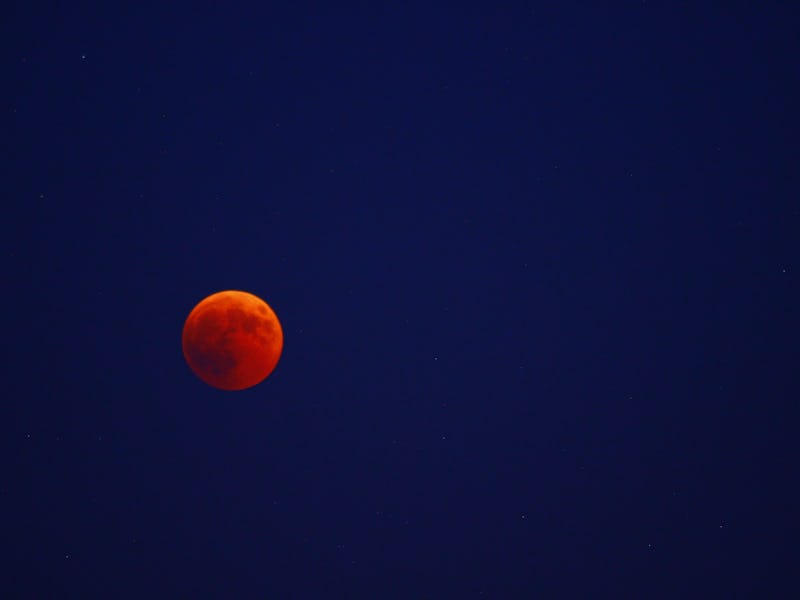Flower Moon: How to see the full supermoon eclipse this month
Everything you need to know about this exquisite sight.

May’s Full Moon will reach its maximum just as spring peaks around much of the United States. Appropriately for the scene surrounding many Americans, the May Full Moon is called the Flower Moon. But this one comes with two surprises — it’s both a supermoon and a total lunar eclipse.
The Full Moon will reach its peak on May 16 and provide a beautiful sight in the night sky to accompany the blooms around you. Full Moons are visible above the horizon all night, so even as the Sun sets a bit later, you’ll still have a chance to view May’s Moon at its best.
What is the Flower Moon?
Many people call May’s Full Moon the Flower Moon, after a tradition from the Algonquin tribes that lived in today’s northeastern United States and southeastern Canada. The Moon's name is meant to evoke all the flowers visible in that region at this time of year.
Different Native American tribes have their own naming conventions for the Full Moon, with other examples including the Corn Planting Moon (referring to the timing of planting a common crop used by some tribes) and the Milk Moon (for those with a more pastoral focus, as May is when many mammalian youngsters are born.)
The names came into broader use in the United States around the 1930s, when the Old Farmer’s Almanac began publishing the Full Moon names alongside weather forecasts and other discussions of astronomical phenomena. Depending on your culture or world region, you may have other associations with the Full Moon.
Some popular astronomy publications may call the May 2022 Flower Moon a “supermoon,” referring to a Full Moon that is within 90 percent of its closest approach to Earth. However, the definition varies by the publication, and the term “supermoon” is controversial in the community because a supermoon isn’t much more prominent in the sky.
How to see the May 2022 Full Moon
May’s Full Moon reaches its peak at 12:14 a.m. Eastern on Monday, May 16. However, if you’re busy or clouded out, the Moon will appear nearly Full the night before and the night after.
May is the last month that falls comfortably before summer and its shorter nights, and it also is warm in most regions of the United States by now. That said, you may be sharing your view of the sky with many bugs, so be prepared for that.
The May “Flower Moon” draws its name from flowers blooming this time of year.
How much brighter is the Moon during a Full Moon?
Full Moons happen when the Moon, in its 27-day orbit around the Earth, arrives at a position opposite the Sun. Sometimes this geometry can cause a lunar eclipse, which will happen this month as the Moon passes into the Earth’s shadow.
The eclipse will be visible from North and South America, Europe, Africa, and parts of Asia. Lunar eclipses last several hours, and this one will reach its peak at 12:11 a.m. Eastern on May 16. During the fullest phases of the eclipse, the Moon will appear red due to the reflection of sunsets and sunrises from the edges of the Earth’s sphere falling on its surface. This gives it the nickname “blood moon.”
The Full Moon (when not in eclipse) outshines everything in the night sky, at magnitude -12.92. The Full Moon is also six times brighter than the Half Moon. You will notice, in fact, that the Full Moon washes out almost everything in the night sky.
So while now isn’t the time to chase faint objects, it’s an excellent time to appreciate the Full Moon and any brighter objects that might be visible, such as the star Vega at 0.03 magnitude. (Most people can see objects as dim as magnitude 6 in dark-sky conditions.)
When is the next Full Moon?
A lunar “year” of 12 moons lasts 354 days. That length of time is slightly less than the Gregorian calendar’s 365 days, meaning the calendar the United States and most other countries follow.
Practically speaking, sometimes the lunar and Gregorian year align such that we can get 13 Full Moons in a year, but that won’t happen in 2022. (The last time a 13th Moon came into our sky in a single year was 2020.)
The next Full Moon will reach its peak on Tuesday, June 14, at 7:52 a.m. Eastern. June’s Full Moon can also be called the Strawberry Moon.